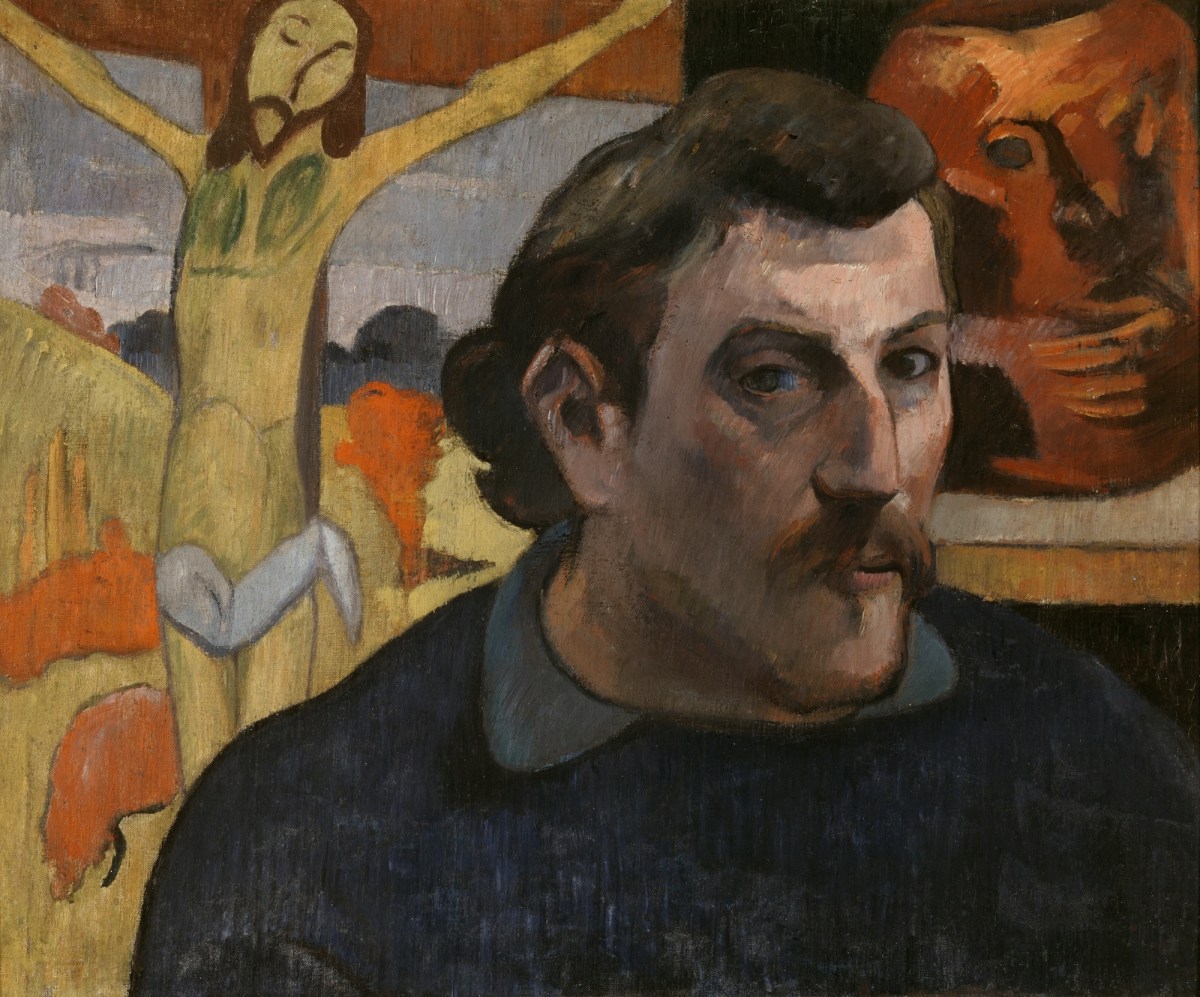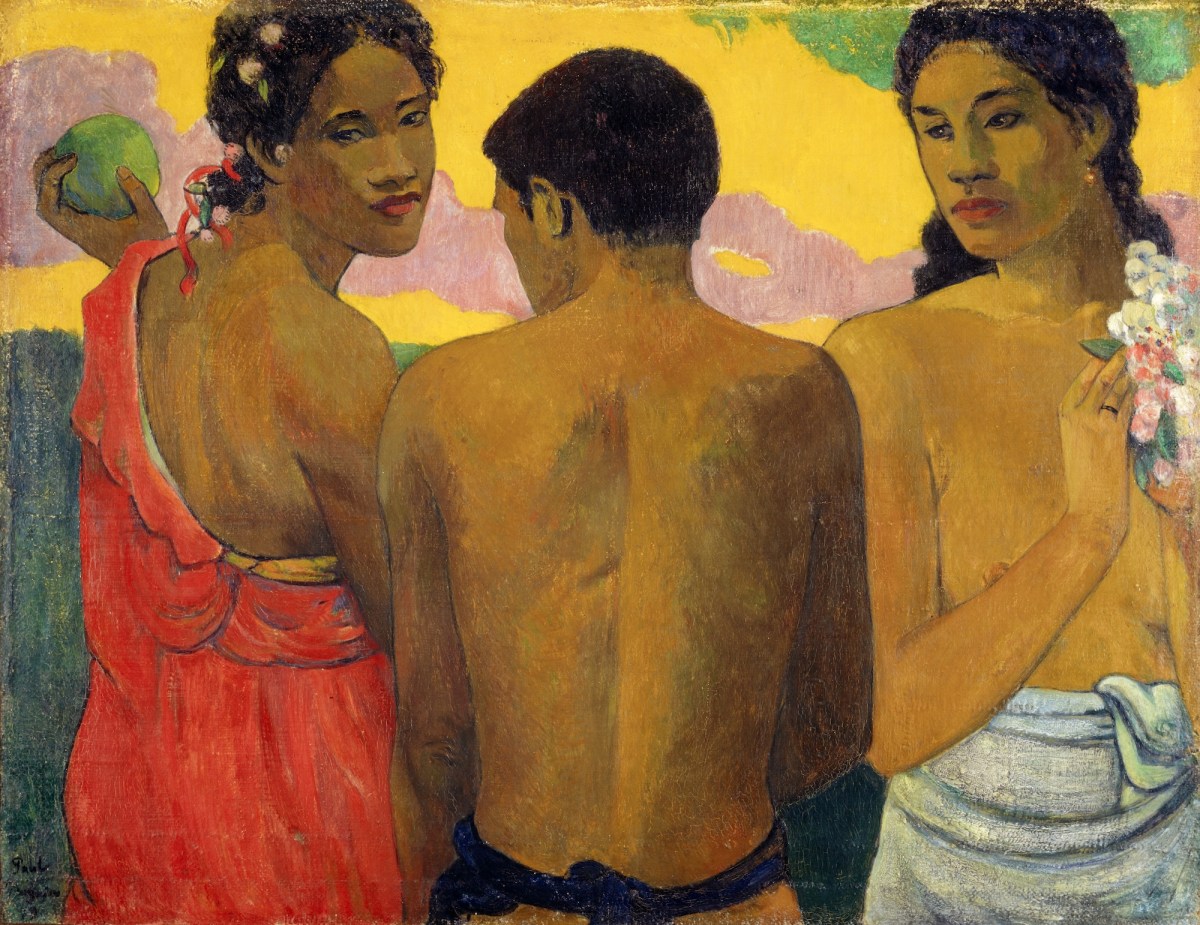In our times, Gauguin is difficult. And, because of that, in many ways this exhibition is brave. Simply put, most galleries would invest in an alternative exhibition to drive audiences and bolster prestige – the role of major exhibitions or blockbusters. But in his opening speech, Prime Minister Anthony Albanese noted that this exhibition shows ‘audiences just how innovative Gauguin’s vision was’, speaking of its radical impact in his time.
The exhibition has been curated by Henri Loyrette, former director of the Louvre Museum and Musée d’Orsay in Paris, and a renowned Gauguin scholar. Perhaps, then, it’s helpful to listen to what is being said in this exhibition – to the art itself – and allow the other voices to equally have their place.
For this reason, I will review Gauguin’s World: Tōna Iho, Tōna Ao for the visitor experience it offers. In a separate story, later this week, I will review the programming and exhibitions that have been curated around the exhibition, to expand the contentious questions and facts surrounding Paul Gauguin – the man – and to allow Pacific voices to reclaim some of that space.
As Albanese also acknowledged that not all of that legacy ‘is easy’, adding that he is an ‘opponent of cancel culture … And history is real. It can also prompt conversations,’ said the Prime Minister.
The exhibition (not the man)

In many ways, this exhibition is a coup. The number of works – 130 of them – that have travelled to Australia is quite amazing and they stretch from intimate early self-portraits to his most recognisable island paintings. It took five years to secure those loans, including several key works.
Where this exhibition is surprising is its belly – the galleries that fill out the centre of this show with ceramics and wood carvings by Gauguin, as well as a lineage of prints.
While there is a practicality to this (simply the gallery footprint of the temporary galleries is large – too large for in high demand, smallish, Post-Impressionist works by a master of the day), it also creates an alternative narrative, which is refreshing.
Loyrette’s main thesis across the exhibition is that Gauguin never really left Paris. Despite living abroad, he was always looking back to the French capital – to his colleagues and fellow artists, and to an art market that was ever in the background.
Indeed, many of the early paintings presented in the exhibition – still lifes in particular – have fragments of paintings and drawings by other artists that Gauguin brought with him to the Maison de Jouir, his hut home on the Marquesas Islands.
A good example is Still Life with Hope 1901, which echoed Van Gogh’s sunflowers and has a monotype by Degas in the background, and another is Still Life with Delacroix Drawing 1887. Loyrette says that, through these painterly clues, Gauguin conveys to us the context within which he wants his art to be seen.
These paintings are early on in the exhibition, and follow the initial works viewers face – and, literally, it is a face-off. The first artwork is Portrait of the artist with ‘The yellow Christ’ (1890-90), which presents a self-portrait with his painting The yellow Christ (Buffalo AKG Art Museum) in the background, making the link between shared sufferings as outcasts.
In the next room, one could mistake Gauguin’s early landscapes as those of any one of his peers – adopting an academic style of the day. The surprise here is that visitors are introduced to a vitrine of ceramics made by Gauguin. He first turned to the medium in 1886 and only about 60 pieces survive today, so it is a delight to see these in the context of his material exploration.
We also start to see a shift in palette and style in this gallery. A stunning work that demonstrates his early adoption of heightened colour is The Wave (1888). Without a horizon line, and a different perspective and imagined wave, it suggests Gauguin’s awareness of Japanese art of the time – again he was never working in isolation.
The tone shifts again in the next large gallery space, which has a spine of vitrines that house the first prints he made – a suite of lithographs on a zinc plate and printed on yellow paper – which became known as the Volpini Suite (1889).
An interesting pairing in this space are the works Young Breton Bathers and Children Wrestling, being shown together for the first time. They were painted just four weeks apart in 1888, and yet there is a radical departure in their styles. The former was influenced by a similar painting by Degas, while the other, Children Wrestling, is explained by Gauguin (in the exhibition label) as ‘thoroughly Japanese, but seen through the eyes of a Peruvian savage’.
What one is witness to across this exhibition is a growing boldness, not only of colour and brushwork, but of Gauguin’s embrace of experimentation. While in our times these images may feel conservative (or wrong), when created, they were, as the Prime Minister described, ‘radical’.
A curiosity that may be a discovery for some is Gauguin’s hand-carved wood sculptures – some functional, some figurative – which sit in this central zone and alongside pieces drawn from the National Gallery of Australia (NGA)’s Pacific collection in an attempt to create context. It also perhaps suggests a thesis of enquiry around art history’s adoption of “the primitive”. This was popular in Paris following the 1984 exhibition at the Museum of Modern Art in New York, headlined by Picasso and Braque. Again, Gauguin was never alone, and always looking back.
In this room, a suite of 10 woodblock prints are shown. Made to illustrate his book Noa Noa, they denote a pursuit of writing that ran parallel to his art-making.
The last two rooms are reserved for the pieces for which Gauguin is perhaps best known, his works from Tahiti. A good example in this room is the painting The Brooding Woman 1891 – one of his first works painted in Tahiti (and interestingly owned by Degas, who supported Gauguin). And the showstopper in this gallery is Tahitian Women (Femmes de Tahiti) 1891.
While as viewers we have been conditioned to read these as his “Tahitian” works, Loyrette insists that Gauguin didn’t care so much about Tahiti per se – that he was interested in mood and the painting as a stage for an attitude, rather than a place.
Rather, his growing boldness of colour is argued by Loyrette, through this exhibition, as a way to exaggerate the subjects’ “exoticism” and European market appeal.
The last room of the exhibition features the final works Gauguin made, after he moved to the Marquesas Islands in 1901. Loyrette makes the point that, while a mythology of poverty has followed Gauguin, he was actually the richest person on the island – thanks to his art sales back in Paris. He built his Maison du Jouir, had staff and threw parties.

But the tale spiralled to a dismal closure. In this end room sits Three Tahitians (1899) – regarded as one of his most important works and a coup to have it travel to Canberra. Gauguin died just four years later – ill, loathed and alone. That is for another story.
Overall, this exhibition has its highpoints and its lows. Sadly we have become so conditioned to spectacular and scale that historical depth no longer feels sexy and appealling to viewers.
And, can we ever really move beyond the contemporary lens when looking at Gauguin? I admit it is hard. Loyrette has done a brilliant job in broadening that narrative, and pulling the viewer back to this place of innovation and brave making. It is a nuanced exhibition with a lot of new learnings. As Loyrette concluded (on the occasion of the Gauguin Symposium for the opening weekend), ‘I hope it brings a different attention to Gauguin.’
Gauguin’s World has been organised by the National Gallery of Australia, Canberra, The Museum of Fine Arts, Houston and Art Exhibitions Australia.
Gauguin’s World: Tōna Iho, Tōna Ao
National Gallery of Australia
Canberra
29 June to 7 October 2024
Ticketed.





